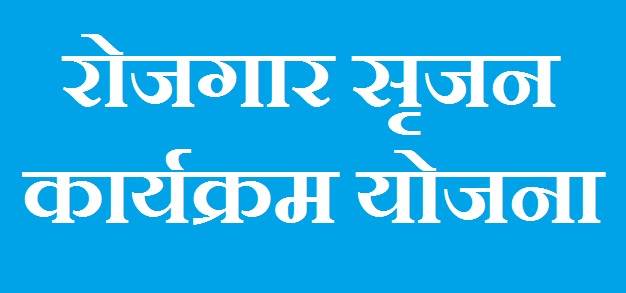PRADHAN MANTRI INDRADHANUSH YOJANA
Pradhan Mantri Indradhanush Yojana also called Mission Indradhanush was instigated by the Ministry of Health and Family Welfare and Government of India on 25th, December 2014. According to the statistics of government the vaccinations or immunization coverage has been improved from 61% to 65% between the years 2009-2013, appears that there is just 1% increase in the coverage every year. Therefore to quicken up this process of immunization by coverage of more than 5% of children every year, government has launched Mission Indradhanush to achieve the mark of full coverage by 2020.
Objective of Mission Indradhanush
The main objective of Mission Indradhanush the coverage of all the children who are either deprived of vaccinations, who are unvaccinated or the ones who are partially vaccinated to counter the avertible diseases. Universal Immunization Programme (UIP) of India is doing an amazing job of providing free vaccinations to 26 million children all across India annually. These vaccinations are provided against 12 life threatening diseases. These vaccinations by Universal Immunization Programme (UIP) is provided to all the children across the country, absolutely free, for life threatening diseases. Some of these diseases are Polio, Tetanus, Tuberculosis, Measles, Diphtheria, Hepatitis B, Japanese Encephalitis (JE), Pertussis, Pneumonia and Meningitis that is caused due to an influenza named Haemophilus type B (HIB), Rubella and Rotavirus Diarrhea. Vaccinations for Rubella, Rotavirus and Japanese Encephalitis are available in selected states and districts only.
The Government of India has started Universal Immunization Programme (UIP) with a vision to provide right to full immunization against avertable childhood diseases for every child in India. UIP was launched in the year 1985 and is said to be one of the largest health program in the world. Even though UIP has been carried out for past 30 years, it could ensure to immunize only 65% of children in the first year of their life and in last five years there has been averagely 1% increase only in the overall immunization coverage. So in order to boost this program, in December 2014, the government of India had Launched Mission Indradhanush, to accomplish full immunization coverage for all the children of India. Mission Indradhanush will work to ensure that pregnant women and all the children aged two or under are immunized fully with the vaccinations that are available.
Strategy for Mission Indradhanush
Mission Indradhanush gives distinctive consideration to the districts that has low immunization coverage, as it is an effort to provide national immunization and to make certain maximum coverage throughout the country. The Ministry of Health and Family Welfare needs to associate with the other ministers, also take part in the ongoing programs to endorse a harmonized and synergistic approach to improve immunization coverage in the country. The strategies and practices will comprise of four basic elements:
• Meticulous planning of campaigns or sessions at all levels: It is required to make sure to assess the plans for all the urban areas and blocks to make sure there is adequate vaccinations made available at the time of routine immunization gatherings. Special plans should be made so that the children with high risk, that live in the slum, nomadic sites, construction sites, brick kilns, and hard to reach areas can also avail the vaccinations.
• Effective communication and social mobilization efforts: Nowadays communication through social media is in full trend. Therefore a communication strategy based on need and social enlistment activities, to engender awareness and demand for immunization services are required. This will enhance the participation of immunization program through mass media, intrapersonal communication, mid media and youth networks and corporates.
• Intensive training of the health officials and frontline workers: enhancing capacity of the health officials and the routine workers is a very important task, since for quality immunization services the trained personal can work diligently.
• Establish accountability framework through task forces: Improving the involvement and responsibility of the health machinery and district administrative is vital and can be obtained by reinforcing the district task force for immunization in every district in India. This can be gained after making certain, use of concurrent session monitoring data to remove the gaps in implementation
Implementation
• Mission Indradhanush works with an objective to cover all the children and pregnant women who have been left out and ensure full immunization coverage, a campaign namely “Catch-up” has been devised for focused and systematic immunization drive. The pregnant women are examined and given tetanus vaccination, zinc tablets and ORS packets are distributed for their use if they get severe diarrhea or dehydration. Likewise doses of Vitamin A are provided to boost up the child’s immunity.
• Phase I of MI was took place on 7th April 2015 as a week-long special intensified immunization initiative in total 201 districts in high emphasis for four sequential months. During this phase around 75 lakh children received vaccinations from which 20 lakh children were provided with full vaccinations. More than 20 lakh women had got examined and received tetanus vaccine.
• In Phase II the coverage of Mission Indradhanush was around 352 districts in all over the country out of which 279 are the districts that fall under medium focus and the remaining 73 are the high focused districts from Phases I. Phase II started on October 2015 plus it covered four special drives conducted with a duration of a week.
• Phase III of this Mission Indradhanysh covered 216 districts. It started on 7th April 2016. There were four intensive immunization rounds that were conducted from April to July 2016 for seven days each month in these districts. These districts have been identified on the basis of estimates where there is less than 60% of full immunization coverage or if it has high drop-out rates. Here the focus is also 5 year old children.
• From first three phases around 28.7 lakh immunization sessions were conducted where in 2.1 crore children were given vaccine and from them 22 lakh children were fully immunized. This shows that Mission Indradhanush has resulted in 6.7% of annual expansion of immunization coverage and the full immunization coverage has been increase by 5 to 7%. Furthermore tetanus vaccines were provided to 55.9 lakh pregnant women.
• Phase IV of Mission Indradhanush sheltered the North-Eastern states such as Assam, Mizoram, Arunachal Pradesh, Meghalaya, Nagaland, Manipur, Sikkim and Tripura, furthermore it has been carried out in the rest of the country in the month of April 2017
• The Mission is also supported by WHO, UNICEF, Rotary International and other partners
Intensified Mission Indradhanush
The Intensified Mission Indradhanush is been initiated by the Government of India in order to reach the all the pregnant women and every child of India under two years of age who have not been covered under the routine immunizatuin programme. This special drive mainly focuses on the coverage and improvement of providing immunization to all the children in the selected districts and cities to ensure full immunization to more than 90% of the children.
Intensified Mission Indradhanush (IMI) will partake synchronization that is inter-ministerial and inter-departmental. There will be accomplishment based evaluation mechanism and amplified observation will be done for effective implementation of targeted prompt intermediations to improve routine immunization coverage. IMI has been supported by 11 other departments and ministers for instance Panchayat Raj, Ministry of Women and Child Development, Ministry of Youth Affairs, Ministry of Urban Development are a few among them. Similarly the merging of the ground level workers of various divisions will be ensured for better coordination and effective implementation of this program.
It is likely that Intensified Mission Indradhanush (IMI) will be monitored very closely at all the levels namely district, state or central at regular intervals. In addition the IMI is likewise to be revised by the Cabinet Secretary at the National Level, it similarly will be persistently monitored by the highest level under the special initiative called “PRAGATI” (Proactive Governance and Timely Implementation).
This Intensified Mission Indradhanush is compelled on the source of figures received from contemporaneous monitoring by partners and end-line surveys, also assessment and supervision by government. IMI has special strategies that are concocted for severe observation of the programme. The states have shaped strategies to advance the coverage constructed on the basis of its self-assessment besides these strategies will be appraised from state to central with an objective to attain immunization coverage of 90% children by December 2018.
To show gratitude and honor for the work, an award has been comprehended to identify the districts that reach more than 90% immunization coverage. The conditions for the award comprises of the best practices and media management in the course of crisis, similarly to acknowledge the involvement of the civil society organizations, partners, and others a Certificate of Appreciation will be awarded



